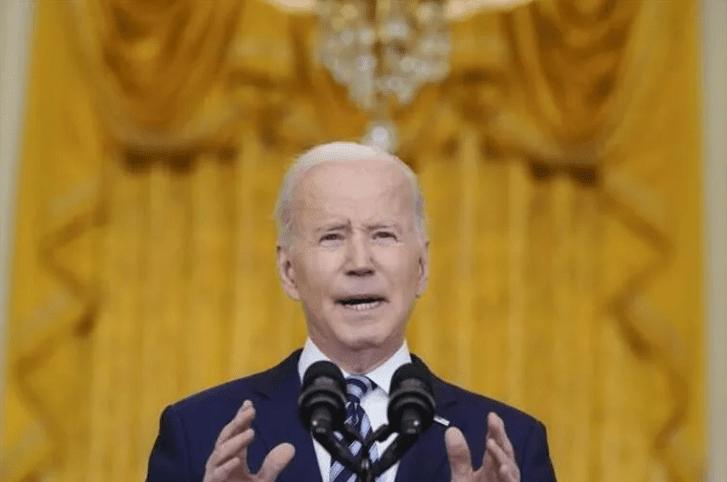For any borrower earning less than $125,000, President Joe Biden’s administration would forgive $10,000 of federal student debt, he announced on Wednesday. No borrower will be compelled to make payments that are greater than 5 percent of their monthly income, and Pell Grant recipients may have up to $20,000 wiped from their debt.
https://twitter.com/POTUS/status/1562511723466309632?ref_src=twsrc%5Etfw%7Ctwcamp%5Etweetembed%7Ctwterm%5E1562511723466309632%7Ctwgr%5E2f832661ea92c88f66baa49a7121323cb553eec6%7Ctwcon%5Es1_c10&ref_url=https%3A%2F%2Fwww.wfyi.org%2Fnews%2Farticles%2Fwhat-will-president-bidens-student-debt-relief-plan-mean-for-hoosiers
On the campaign trail, Biden promised to wipe out all undergraduate debt at public, historically black, and minority-serving schools and universities. Even while his current approach falls short of that goal, it is nevertheless a radical step. How will this judgment impact Indiana borrowers?
Federal student loan debt in the United States is currently $1.6 trillion, or about 8% of the GDP. Currently, more than 48 million Americans are repaying student loans, which cost $28,950 on average per borrower. At $32,874, Indiana is over the national average, and graduates of IU Bloomington may anticipate borrowing an average of $19,500 in federal loans, according to U.S. News & World Report.
As Executive Director of Financial Wellness and Education, Phil Schuman offers advice to IU students on their finances and debts. He claimed that Biden’s debt reduction strategy might have a particularly negative effect on low-income borrowers.
According to Schuman, for every $10,000 in student loans that a borrower has under a 10-year repayment plan, their monthly payments would be reduced by $100. “Over the past few years, many may have found it challenging to subsist. Even while the $100 will go a long way, it might not be enough to help them get over the obstacle. It might only be able to help them regain their balance.
Since years, there has been increasing public pressure on the federal government to act to address the student loan crisis. Author and professor of sociology at Indiana University, Brian Powell
“What we find is a dramatic shift from 2010 through that whole decade in which people now see the government as being a major player or at least a key partner in handling the financial responsibility of college,” Powell said.
Powell’s research showed that although the public perceives college degrees as being increasingly vital, they are also becoming increasingly expensive. Additionally, respondents who were polled in 2015 and 2020 were significantly more likely to name debt as a role in their thinking than respondents who were polled in 2010. Powell added that the Cheap Care Act’s passage in 2010 persuaded many Americans that the government needed to get engaged to keep other critical services affordable.
The potential impact that raising household income would have on inflation has prompted fiscal conservatives to reject Biden’s proposal. The federal government is working to reduce the 8.5% inflation rate in the United States by altering tax laws and bringing down healthcare prices.
While Powell recognizes that the new plan’s potential side consequence of inflation
Powell acknowledges that inflation could be a side effect of the new plan, but he can’t say for certain. Nevertheless, he encouraged people to consider the plan as a cost-benefit analysis rather than a zero-sum game.
“Let’s suppose for a moment that it is inflationary,” Powell said. “You still have to compare the benefit of providing forgiveness versus the potential for inflation.”
Some critics say that $10,000 isn’t enough to bring those needed benefits, especially for marginalized communities. Research from the Brookings Institute shows that Black graduates hold an average $53,000 in debt four years after graduation – almost double the amount of White graduates. Black women in particular are almost three times as likely to have student debt as White men. In a CNN op-ed, NAACP President Derrick Johnson described Biden’s plan as “pouring a bucket of ice water on a forest fire.” U.S. Senators Chuck Schumer and Elizabeth Warren urged the president to forgive $50,000 instead.
IU alumnus, former Student Government President and former President of IU Black Student Union Ky Freeman said that during his tenure in both positions, he saw other students from marginalized backgrounds face financial challenges that jeopardized their entire education.
“Some of our students didn’t make it back after a semester because of how expensive college got, and they’d already procured enough loans that they couldn’t get any more,” Freeman said.
Discussions from the Black Student Union informed Freeman’s approach to governing the student body, including advocating for loan forgiveness in D.C., and pressing university administrators to distribute more Pell Grants.
“When you’re talking about those types of financial hardships that come from our intersecting identities playing out, as Black students we don’t get to come and just be students at university,” Freeman said.
Powell warned Americans not to view one-time debt forgiveness as a long-term answer to the escalating expense of higher education, regardless of its effect on specific individuals.
Loan forgiveness is only one aspect of the conversation over how affordable college is. He spoke. And it’s only one aspect of the debate about what role the government ought to play in lowering college expenses and making them accessible.
The source used in the preparation of the news: https://www.wfyi.org/



